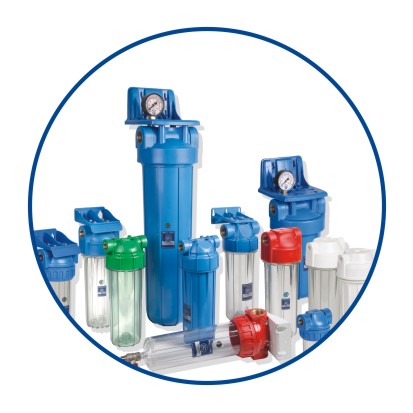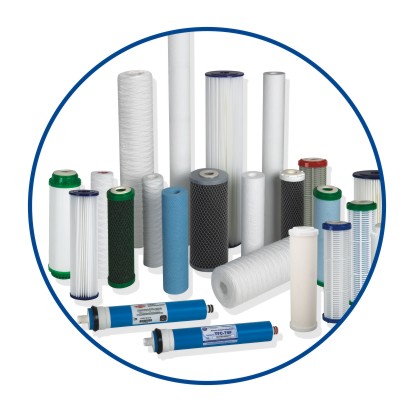Required water parameters for RO filtration
Raw water, which will be subjected to filtration with reverse osmosis systems must meet the following conditions:
Water pH - 2 pH - 11 pH
Мax. Total Hardness - 400 ppm (mg/l)
Max. Alkalinity - 8 (mval/l)
Iron & Manganese content - < 0.05 ppm (mg/l)
Max. SDI Index - SDI 5
Max. Water Salinity TDS - 2000 ppm(mg/l)
Manufacturer and distributor assume no liability for the products resulting from the use of feed water which does not meet above listed conditions.
Sediment scaling (of calcium and magnesium) and ions of iron effectively contribute to lower performance and ultimate failure Reverse Osmosis systems and their components.
The following system's components are most likely to fail:
- Osmotic membrane: sediment scaling and iron compounds clog microscopic pores of the membrane which in turn leads to damage of the membrane and shortening its service life.

- Four-way valve: controls the flow and water intake for the water storage tank (pressure equalization). The valve will automatically shut off water supply to the diaphragm (the device does not receive water). Sediment scaling and iron compounds may contribute to improper functioning of the valve. Overloaded valve may not complete be closed resulting in a continuous flow of water to the drain and consequently attribute higher water bills. Four way valve should undergo a cleaning process at least every six months.

- Flow restrictor: reduces water consumption in RO Systems by producing adequate working pressure inside the membrane. Poorly connected or blocked, may cause damage to the osmotic membrane. Flow restrictor must be replaced from time to time, but not less frequently than every 18 months.

How to check the parameters of raw water?
The parameters of raw water can be checked in two ways:
1) Using disposable water quality tests FXT-AQ offered by Aquafilter. WARNING! Disposable test should be used only for initial identification of water quality problem(s). The test results can not be used as basis for selecting filter products and water treatment solutions.
2) Contact your local Sanitary-Epidemiological Station or an accredited water professional or laboratory.









